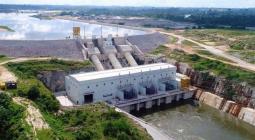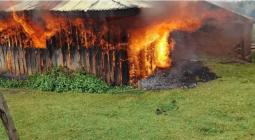Australia’s carbon credits system a failure on global scale, study finds
Researchers find carbon offsets approach, which is supposed to regenerate scrubby outback forests, was not reducing emissions as promised
Australia’s main carbon offsets method is a failure on a global scale and doing little if anything to help address the climate crisis, according to a major new study.
Research by 11 academics found the most popular technique used to create offsets in Australia, known as “human-induced regeneration” and pledged to regenerate scrubby outback forests, had mostly not improved tree cover as promised between about 2015 and 2022.
The peer-reviewed study, published in the nature journal Communications Earth & Environment, analysed 182 projects in arid and semi-desert areas and found forest cover had either barely grown or gone backwards in nearly 80%.
The academics said it meant these projects were therefore not reducing emissions as promised, and polluting companies that bought offsets created through these projects were often not reducing their impact on the climate as they claimed.
They said this was a globally significant problem as Australia’s forest regeneration method is the world’s fifth biggest nature-based offsets program, with projects covering nearly 42m hectares, an area larger than Japan.
More than 37m carbon credits – each meant to be worth a tonne of CO2 drawn from the atmosphere and worth between $750m and $1bn – had been issued for these projects by June last year.
The authors of the study include Andrew Macintosh, an environmental law professor at the Australian National University (ANU), a former head of a carbon credit integrity assurance body and more recently a sharp critic of the management of the scheme. Two years ago he described it as a “sham” and a fraud on taxpayers and the environment.
The researchers said the findings add to growing scientific literature that highlighted “the practical limitations of offsets and the potential for offset schemes to credit abatement that is non-existent, non-additional and potentially impermanent”.
Megan Evans, a senior lecturer in environmental policy at the University of New South Wales in Canberra and a co-author of the new study, said the researchers found there was “nowhere near the forest cover that you should see” given the number of carbon credits issued.
“What this means is that the projects are not actually sequestering the amount of carbon claimed, and we’ve got a whole bunch of carbon credits in the system that don’t represent one tonne of CO2,” she said.
“Most of these credits are being used to offset heavy emitters under the safeguard mechanism, so we’re not actually reducing carbon emissions at all. The overall outcome is we’re increasing the amount of carbon pollution.
“We’re ultimately getting worse outcomes for the climate than if we didn’t have these [forest regeneration] projects.”
The researchers called on the Australian government to stop issuing carbon credits to regeneration projects in uncleared areas “for the sake of the integrity of Australia’s carbon market and the country’s decarbonisation efforts”.
The Clean Energy Regulator, which manages the scheme, said it had confidence in the integrity of the carbon credit scheme and the human-induced regeneration method. “A number of reviews have confirmed the integrity of the HIR method,” a spokesperson said.
The climate change minister, Chris Bowen told the ABC’s RN Breakfast on Wednesday that a review of the carbon credit scheme that he commissioned from Ian Chubb, a former Australian chief scientist, had backed the integrity of the system.
Bowen said Chubb found the scheme was “basically sound”, but needed some reforms that were being implemented. The Chubb review was not asked to examine individual projects.
Bowen said the regulator had also asked Cris Brack, an honorary ANU associate professor and forest researcher, to review the performance of five-year-old projects and found they were “demonstrating regeneration, and proponents are implementing the project activities”.
“There’s been other checks in relation to the significant increase in vegetation that we’re looking for and it has found that increasing vegetation exists,” Bowen said.
The carbon credits generated through forest regeneration can be used by companies to meet emissions reductions goals under the safeguard mechanism, a Coalition policy revamped under Labor to require the country’s 215 biggest industrial polluting facilities to reduce their emissions intensity by up to 4.9% a year.
The projects analysed in the new paper are mostly in dry outback areas in Queensland, New South Wales and Western Australia. They do not involve tree planting, but are said to regenerate native forests by reducing the impact of grazing by livestock and feral animals.
Critics, which have included the Australian Conservation Foundation, say research suggests grazing by livestock and feral animals mostly does not affect “woody vegetation cover”. The study said the total amount of woody vegetation cover in the areas analysed increased by less than 1% after grazing was reduced.
The researchers examined 75 projects that they said, based on the number of credits they received, should have had near 100% forest cover, but found the actual coverage in 2022 was only 21%. This was only a 1.8% increase since the projects were registered, they said.
Don Butler, an ANU ecologist who led the statistical analysis, said the changes largely mirrored what happened in nearby areas not included in the projects.
David Eldridge, another co-author and a longtime NSW government scientist now at the University of NSW’s Centre for Ecosystem Science, said the results of the study were not a surprise. “They align perfectly with what decades of research in Australia’s rangelands suggests would occur,” he said.
Cover photo: A co-author of the study researchers found there was ‘nowhere near the forest cover that you should see’ given the number of carbon credits issued. Photograph: Hilke Maunder/Alamy



